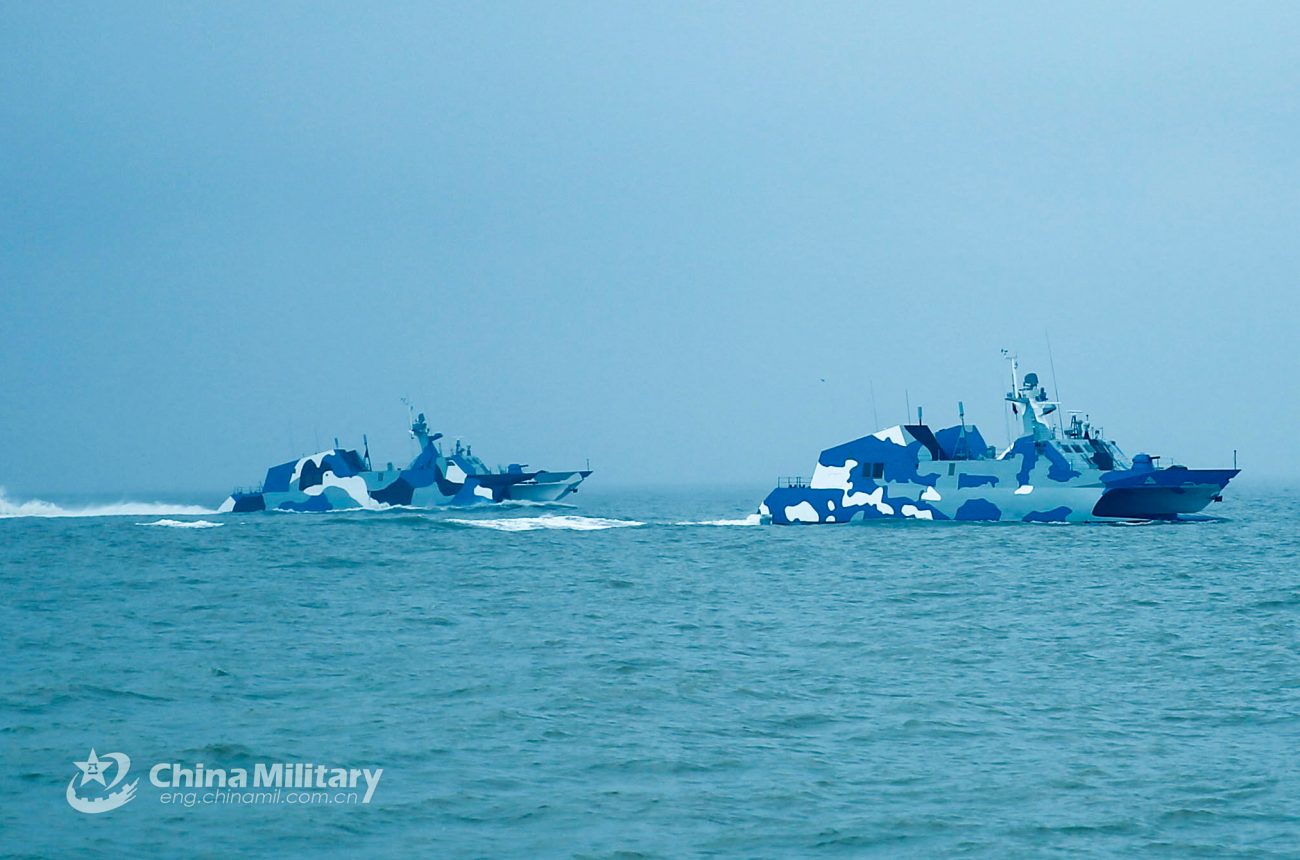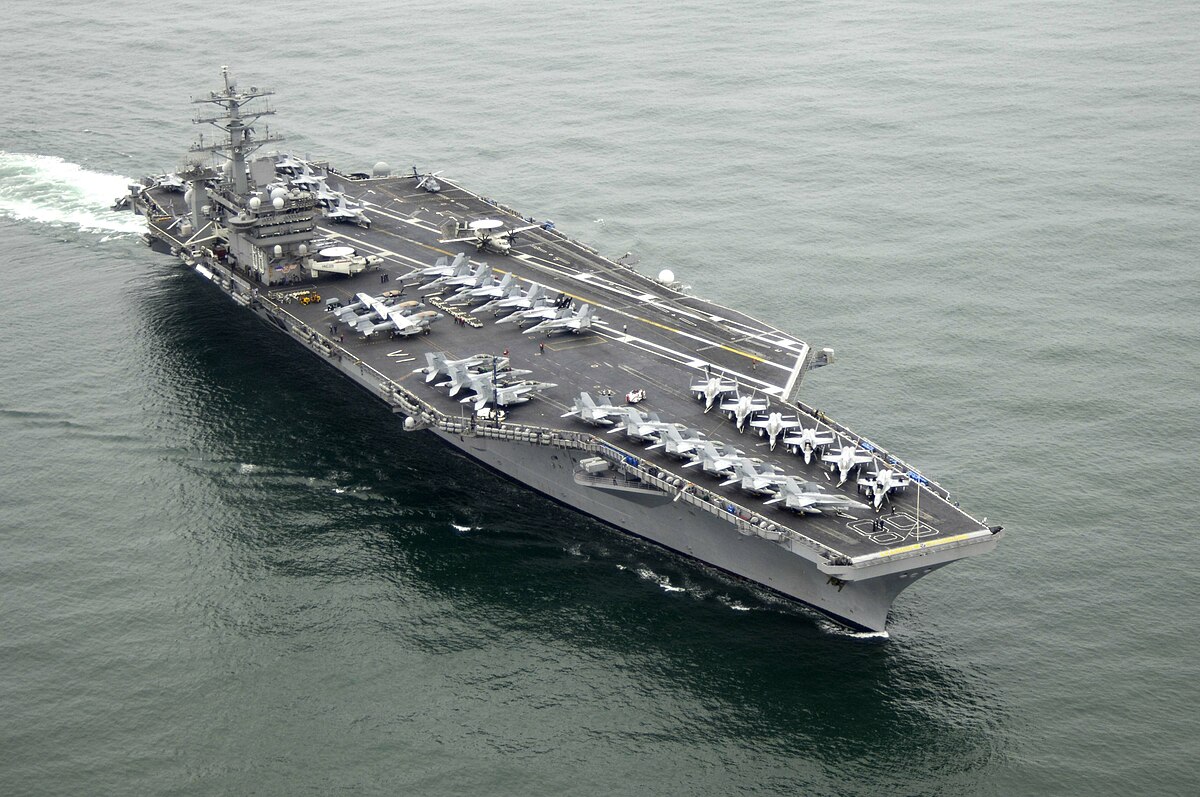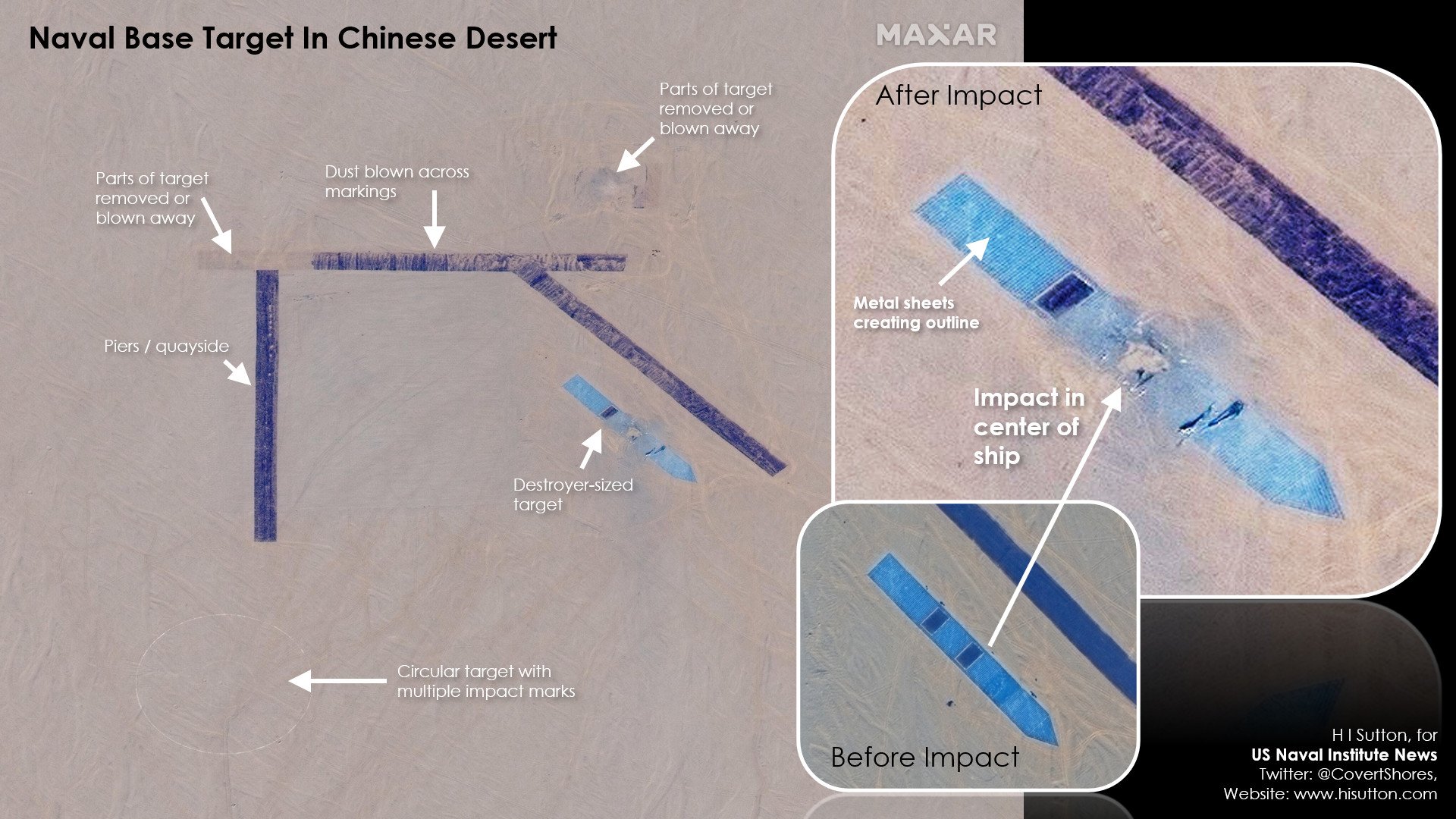Amid continued tensions between the US and China over Taiwan, the Chinese military has been beefing up to merge Taiwan with the mainland and thwart possible American interference.
Russia Unleashes Horrifying Razor-Sharp Inch-Long Metal Projectiles On Ukraine That Needs Pilers To Take Them Out
The Chinese PLA Navy has emerged as the biggest and one of the most powerful navies in the world; there was a time when Beijing had to kneel down to the US and admit American superiority as it looked to intimidate the Island state.
Twenty-six years ago, during the run-up to Taiwan’s first direct presidential election in March 1996, the US and China engaged in an unprecedented show of force near Taiwan, marking the lowest point in Sino-American relations since the Tiananmen Square crackdown of 1989.
The ‘Third Taiwan Strait Crisis’, as the events came to be known, set the stage for a long-time strategic rivalry between Washington and Beijing. The events, that took place between 1995 & 1996, were termed by an Asian affairs veteran of the Clinton Administration as “our own Cuban missile crisis.”

Third Taiwan Crisis
Lee Teng-hui, the President of Taiwan, was the Kuomintang Party’s candidate for Taiwan’s first direct presidential election in March 1996. An alumnus of Cornell University, President Lee was invited to the US to attend a reunion at the University in July 1995.
China strongly objected to Lee’s US visit and the Clinton Administration assured Beijing that Lee would not be granted the visa. However, the pressure from American friends of Taiwan, especially in the US Congress, led to President Clinton reversing the decision.
Also, a year earlier, the Clinton Administration had revised its Taiwan engagement protocols allowing higher-level meetings, and before that, in 1992, the Bush Administration had agreed to sell 150 F-16 fighter jets to Taiwan.
Beijing viewed all of this together as the US departing from the ‘One China Policy’ that had guided the normalization of ties between the US and China in 1979.

Chinese Military Intimidation
Lee was granted a visa and he gave a speech in Ithaca, while Beijing responded by firing missiles across the Taiwan Strait and live-fire exercises that closed the shipping lanes and disrupted air and maritime commerce in Taiwan.
Tensions continued throughout 1995 and Taiwan conducted its own set of missile tests and held exercises aimed at fending off an invasion.
Ahead of Taiwan’s December Legislative elections, China held larger military exercises and as December turned to January, China’s relations with Taiwan and the US kept worsening.
Meanwhile, the campaigning ahead of Taiwan’s first direct presidential election saw some candidates, including Lee, taking a tough line on China, which prompted the People’s Liberation Army (PLA) to amass 100,000 troops in Fujian Province, leading Washington to warn China against military intimidation.
Beijing ignored those warnings and carried out military exercises throughout March, even resorting to nuclear signaling. China fired nuclear-capable M-9 missiles belonging to PLA Second Artillery Corps, now known as PLA Rocket Force. One of these missiles passed almost directly over Taiwan’s capital, Taipei, before landing 19 miles off the coast.
In fact, before the firing of nuclear-capable missiles in March, top Chinese military officials had already issued an implied nuclear threat to their US counterparts, according to Chas. W. Freeman Jr. was Assistant Secretary of Defense at the time.
“I said you’ll get a military reaction from the United States” if China attacks Taiwan, Freeman had said, recalling his arguments with Chinese military officials, “and they said, No, you won’t. We’ve watched you in Somalia, Haiti, and Bosnia, and you don’t have the will.’ “
Then, according to Freeman, a senior officer added, “In the 1950s, you threatened nuclear strikes on China thrice, and you could do that because we couldn’t hit back. Now we can. So you are not going to threaten us again because, in the end, you care a lot more about Los Angeles than Taipei.”

US Intervenes In The Crisis
Amid all the tensions, the US finally decided to intervene in the crisis, and on March 10, President Clinton deployed two carrier battle groups to East Asian Waters: the Carrier Group Five, centered on USS Independence, proceeded from Japan to Taiwan-adjacent waters and the Carrier Group Seven centered on USS Nimitz that departed from the Persian Gulf, plus the amphibious assault ship Belleau Wood.

The aircraft carrier, USS Nimitz and her battle group, and the Belleau Wood sailed through the Taiwan Strait, while the USS Independence did not.
China conducted a fourth and final missile test on March 13 and a joint ground, air, and naval exercise a few days later.
While Taiwan’s election went forward as planned, Lee Teng-hui became Taiwan’s first popularly elected President in a much setback to Beijing.
The crisis embarrassed the Chinese leadership, as it realized its inability to stop the US forces from coming to Taiwan’s aid; however, this also led to a period of near-annual double-digit percentage increases in China’s defense budget.
Chinese Military Modernization and Efforts After 1996
China has spent more than a decade since the end of the 1995-1996 Taiwan Strait Crisis modernizing and reforming its Navy, Air Force, and Rocket Force in a bid to pose a multifaceted threat to Taiwan, plus it has developed a range of anti-access/area-denial measures to keep prevent the US from intervening in a potential future conflict.
More specifically, under the leadership of President Xi Jinping, China’s military has been making efforts to develop the joint operational capability to improve collaboration between different services of the Chinese armed forces.
As reported by EurAsian Times earlier, PLA has outlined five types of joint operations for Taiwan Strait contingency which include – Joint Firepower Strike Operations, Joint Blockade Operations, Joint Attack Operations, Joint Anti-Air Raid Operations, and Joint Border Area Operations.
Of these, the joint Anti-Air Raid Operations are specifically aimed to prevent or complicate the American effort at assisting Taiwan through jointly conducted precision strikes by the PLA Navy, Air Force, and Rocket Force, targeting the US forces in the region – Japan, South Korea, and Guam – and also the ones coming in the Pacific from the west coast of America.
Accordingly, China has been refining its anti-ship ballistic missile capabilities to strike a wide range of targets, including the large, carrier-sized targets to smaller ships and naval bases, according to a series of satellite images reviewed by the US Naval Institute (USNI).
The layouts of these targets resemble the US Aircraft Carrier, Destroyers, and Taiwanese naval bases, according to an analysis by various experts.

Also, earlier this month, a PLA naval aircraft carrier battle group performed open-sea combat training in the western Pacific Ocean. This involved a total of eight PLA Naval ships, including the aircraft carrier Liaoning and the Chinese navy’s most powerful destroyer, a Type 055 large guided-missile destroyer Nanchang.
An 8-ship #Chinese #Navy task group led by #carrier LIAONING 16 was observed 1 May by Japanese defense forces underway in the East China Sea, then passing south of Okinawa into the Pacific Ocean. With LIAONING are destroyers NANCHANG 101, XINING 117, URUMQI 118, CHENGDU 120… pic.twitter.com/8sjYDfJvNg
— Chris Cavas (@CavasShips) May 2, 2022
Incidentally, the US Aircraft Carrier USS Abraham was also in the Philippines Sea, meaning the two battle groups were near each other at some point.
So, it can be safely said that the cross-strait military balance of power has shifted in China’s favor significantly.
In 1996, the US Navy could park an aircraft carrier 100 miles off Taiwan’s coast without having to worry much about the ship’s safety. Today, that carrier would sit well within the range of China’s expanding air, missile, and naval forces.
- Contact the author at etdesk@eurasiantimes.com
- Follow EurAsian Times on Google News




